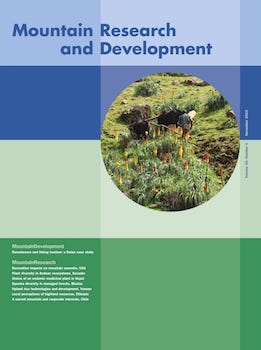Sustainable management of rare medicinal plants is becoming a major conservation issue in the Himalaya, and the need to consider population status and life history strategies for sustainable management of these plants has been expressed. We sampled Aconitum naviculare, an endemic Himalayan medicinal plant, to study life history strategies and abundance across 6 sampling sites in Manang Valley, central Nepal. The relationship among environmental variables, life history traits, and abundance was analyzed by using regressions. Seed germination, growth characters, reproductive output, and population density varied significantly across the sites; most of these were lowest at Khangsar, a site located at the highest elevation. Growth characters were largely governed by life forms of associated species. Plant height and petiole length were higher in individuals growing within juniper scrub, whereas tuber mass, flowers/plant, and seed/follicle were higher in open areas. Reproductive outputs were determined by the growth vigor of individual plants and associated species, and not by population size. Stem mass and above-ground biomass declined with elevation, whereas density increased with relative radiation index. Soil attributes could not explain the variation in life history traits and abundance. Associated shrubs reduced the pressure of human collection and destructive effects of animal grazing. In conclusion, a plant's life history and responses to different natural environments can explain the variation in abundance of rare species such as A. naviculare.
How to translate text using browser tools
1 November 2010
Life History and Population Status of the Endemic Himalayan Aconitum naviculare
Bharat Babu Shrestha,
Pramod Kumar Jha
alpine
conservation
environmental variables; facilitation
germination
growth variation
medicinal plants
Nepal





